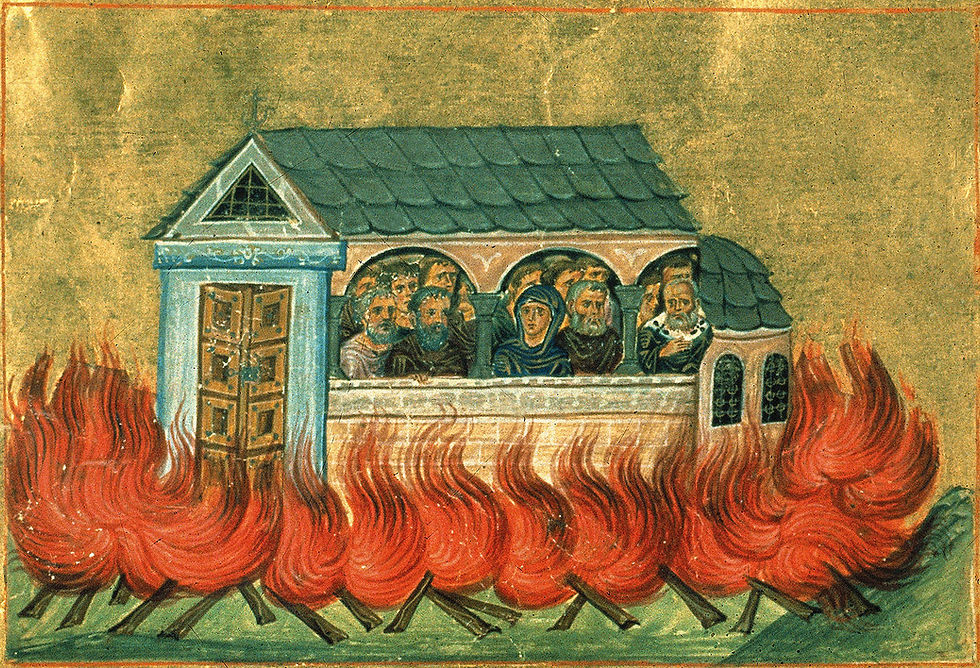War and Evolution
- Tim Boatswain

- Mar 29, 2022
- 3 min read
Updated: Mar 22, 2023
Following my article on Russia, Byzantium and Ukraine (https://timboatswain.wixsite.com/website/post/russia-byzantium-and-ukraine) and my interview with Herts Live I have had some interesting discussions: as you would expect much has been quite speculative about what is going to happen rather than the motivation I was writing about. It is hard also not to be involved emotionally as the media is constantly reporting the horrific bombardment of Ukrainian cities and the terrible suffering of the civilian population. So, understandably, the debate is now focused on the course of the conflict and how it can be brought to an end.
I have, however, also been asked broader questions about the human disposition for warfare. The typical sort of question has been, "You are an anthropologist why do human beings engage in such a deadly and counterproductive activity as war in the 21st century?"
There is no clear anthropological theory for the evolution of war and that is partly because the evidence from our past is often slight or ambiguous. However, I remember while a student being struck when I first saw Stanley Kubrick's 2001: A Space Odyssey, which rehearsed a prevalent anthropological theory at that time.

There is a scene early on when two groups of ape-like hominins (technically earlier than homo sapiens but a member of the same biological 'family' categorisation) confront each other, one of the creatures holds a bone as a weapon which he casts into the air. This scene is based upon a theory promoted by the Australian anthropologist Raymond Dart and popularised by the American playwright, screenwriter and science writer Robert Ardrey. Ardrey met Raymond Dart and became an admirer, writing about Dart's discovery, in South Africa, of Australopithecus africanus, an early member of the hominid family that existed between 3.5 to 2 million years ago.
Australopithecus africanus walked on two legs and was found in a cave along with many animal and human bones which Dart interpreted both as weapons and prey. His conclusion was that this early hominin was a vicious carnivore, who even had cannibalistic tendencies. Writing in 1953 he stated in the article The Predatory Transition from Ape to Man: “the blood-bespattered, slaughter-gutted archives of human history” were apparent, from the earliest records of evolution through to the atrocities of World War II. His picture, no doubt influenced by the violence of two world wars, was that the human species from our earliest ancestors were both violent and murderous.
Of course, there is a difference between individual violence, homicide and war. War is a collective activity on an organised scale but it has been argued that its origins may well be linked to instinctive evolutionary adaptations of survival and competition. I mentioned before the evidence of early man's collective violence is ambiguous and has tended to divide paleoanthropologists into two camps, described by Keith F Otterbein in his book The Evolution of War: A Cross-Cultural Study, as 'hawks and doves' - those, like Dart who see violence as endemic in human evolution that then leads to the conduct of war and those who see collective violence as a cultural aberration.
The 'hawks' cite the evidence of the organised violence of chimpanzees, who shared a common ancestor with humans, and the hunting violence of the early human species like Neanderthals as proof of an evolutionary adaptation for organised violence.
The 'doves' argue that the early hunter-gathers had no motive for war but the cultural phenomenon of the Neolithic Revolution (10,000 BCE- to the present) when agriculture and husbandry allowed humans to become sedentary, which promoted organised violence by creating the concepts of territory and ownership; competitors then strove to seize or defend their assets. This resulted at a national level in war.
Whether war is an evolutionary adaptation or a cultural meme, the consequences of tribalism have resulted in xenophobia, ethnocentrism and racism in human behaviour that has certainly in historical times contaminated human relations through collective violence. The competition for power at an international level, whether related to ideological or religious beliefs or economic resources, has led, particularly by authoritarian regimes, to the disastrous practice of war.




Comments